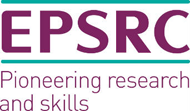Hugh Littlehailes
Hugh Littlehailes
Hugh joined the CDT in September 2017, having previously completed a BSc in Physics with Astrophysics at the University of Glasgow.
In Semester 1 of 2017-18 Hugh completed a short exploratory research project at the University of Glasgow in How to measure femtosecond pulses, supervised by Dr Matteo Clerici. In Semester 2 of 2017-18, he conducted a practical research project at Queen's University Belfast supervised by Professor Robert Bowman, Synthesis of plasmonic materials using pulsed dc sources.
CDT PhD Project
INTERMETALLIC PLASMONIC ANTENNAS
Supervisors:
Dr Fumin Huang, Queen's University Belfast
Dr Donald MacLaren, University of Glasgow
Developing plasmonic antennas capable of working in harsh environment is very important for many applications, such as in heat-assisted magnetic recording (HAMR), solar energy harvesting and nanoscale heat transfer systems. At present the most efficient plasmonic antennas are mainly based on noble metals (such as silver, gold and copper). However, these coinage metals are soft and have relatively low melting temperatures, which easily deform at elevated temperatures, therefore they are not suitable for applications in high-temperature environment, such as in HAMR. Recently, significant research interest has been growing in refractory plasmonic materials. A range of new plasmonic materials has emerged as promising candidates for high-temperature applications, such as transition metal nitrides, conductive oxides, and intermetallics.
This project aims to explore the optical properties of intermetallic materials and to investigate the functionality of intermetallic plasmonic antennas. Many intermetallics exhibit superior thermal and mechanical properties, rendering them highly desirable materials for applications in extreme environment of high temperature and mechanical strength, the similar harsh operating conditions of HAMR devices. In the past, research on intermetallics has mainly concentrated on mechanical, chemical and thermal properties, the optical properties of a broad variety of intermetallics remain largely unexplored. Recently it was found that intermetallics may possess interesting optical properties ideal for many alternative plasmonic applications. In this project, we will explore the optical properties of various intermetallic materials, and assess their suitability as alternative plasmonic materials for HAMR technology.
Previous work has achieved some promising preliminary results on intermetallics of AuZr. This project will continue the investigation and extend it further to other materials. The Centre for Nanostructured Media (CNM) at Queen’s University Belfast is home to a suite of state-of-the-art nanofabrication and characterisation tools, including industrial standard magneton sputtering systems, ellipsometers, brand new transmission electron microscopy (TEM), scanning electron microscopy (SEM), X-ray diffraction (XRD), atomic force microscopy (AFM), focused ion beam (FIB), and a range of optical spectroscopy and microscopy equipment. These, in conjunction with the advanced nanofabrication facilities at the University of Glasgow, will provide excellent experimental facilities to ensure the successful and smooth implementation of the project.





